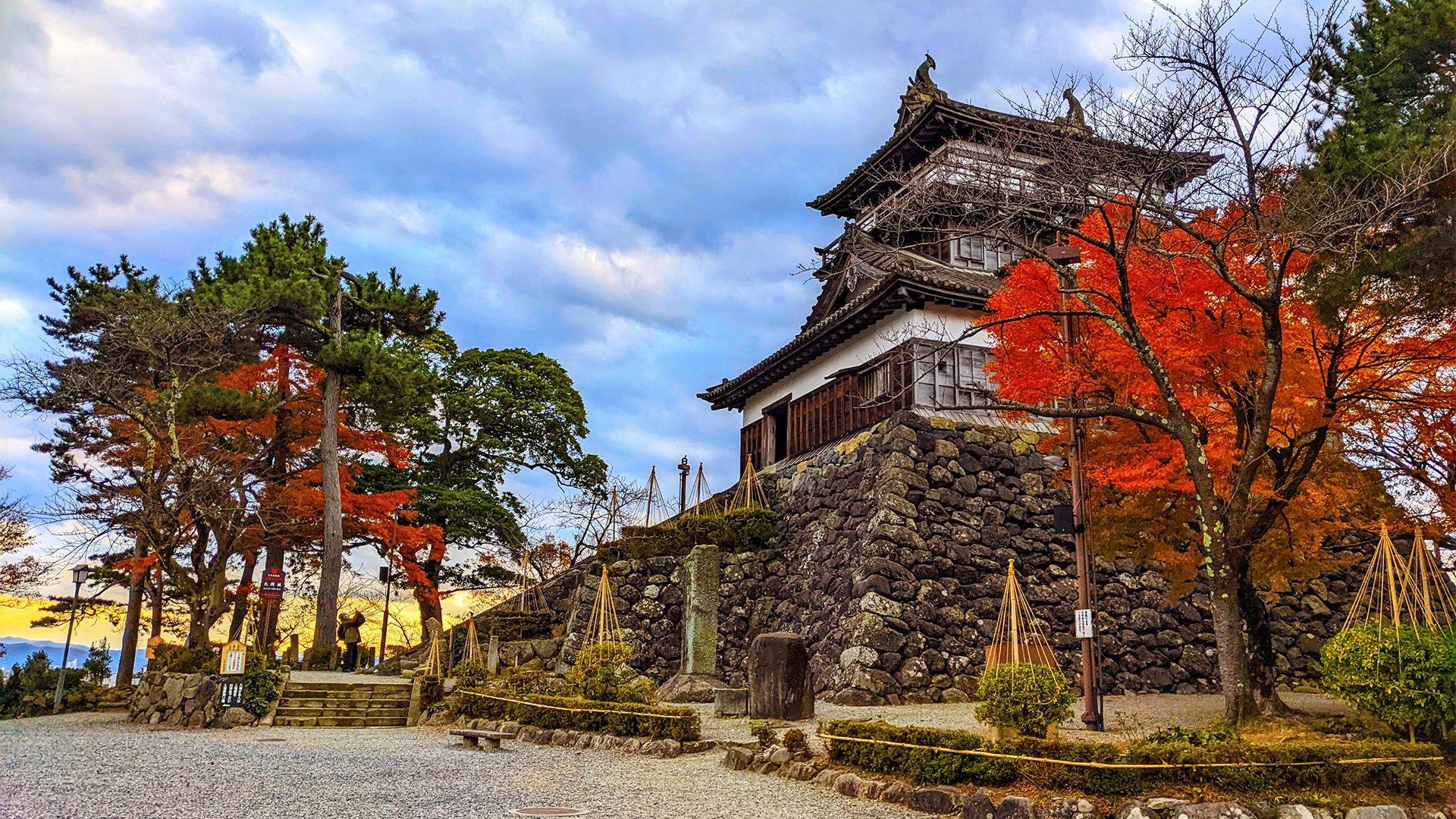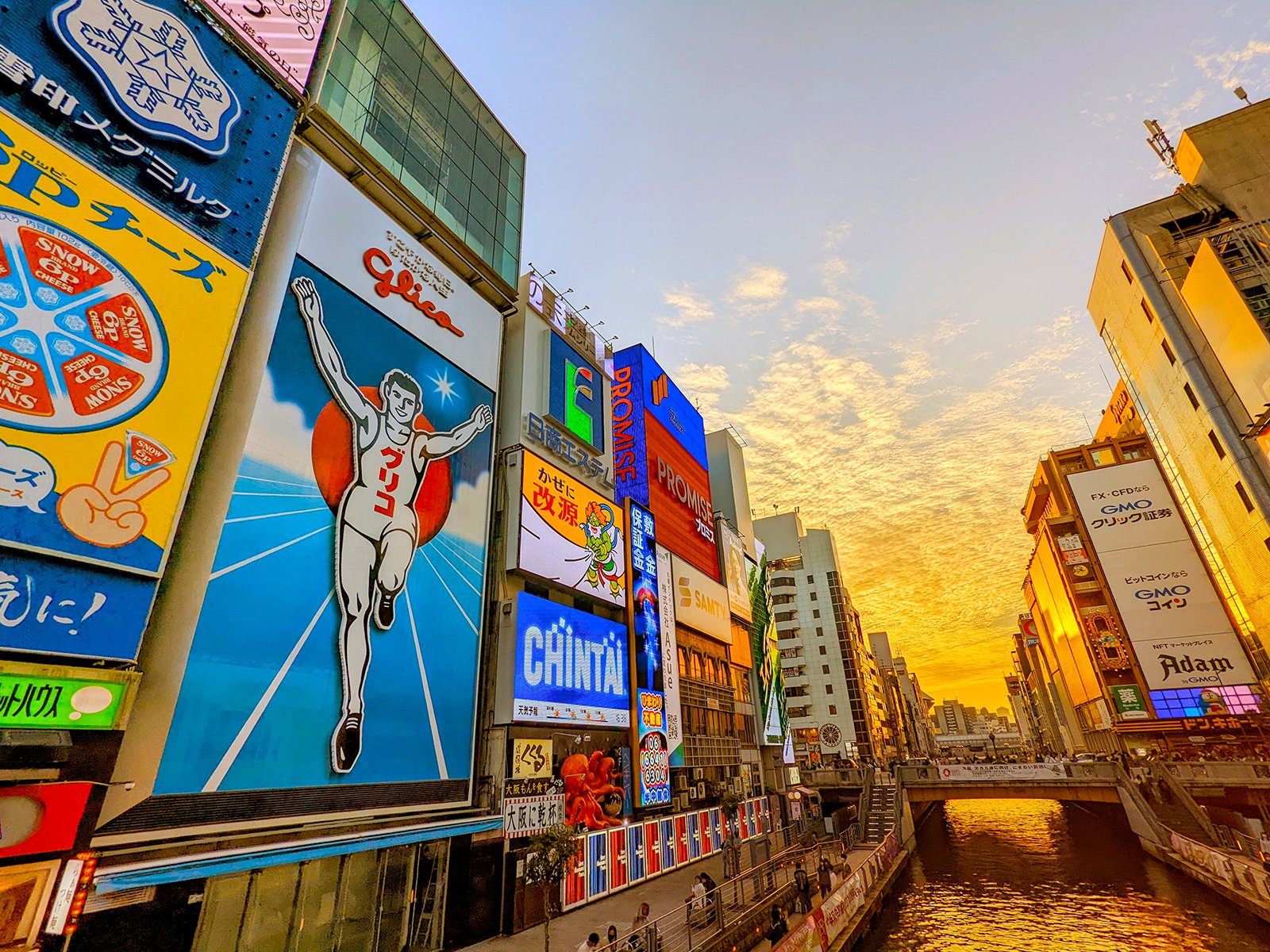A Visual History of Mount Fuji

Exploring the symbolism of Japan’s most famous mountain.
Cover photo: Dreaming of Walking Near Fuji, woodblock print, by Koryusai Isoda [礒田 湖龍斎] (circa 1770-73). Via the National Museum of Asian Art (color-corrected and cropped).
Intro
Mount Fuji (富士山) — locally called Fujisan or Fujiyama — is Japan’s most famous natural landmark and among the best-known mountains on earth. Revered as a sacred natural deity and appreciated for its graceful form, Fuji has served as an inexhaustible source of inspiration for over a millennium.
Fujisan is admired as an icon of strength, harmony, and longevity. “Ever since heaven and earth were parted, it has towered lofty, noble, divine,” wrote Yamabe no Akahito (山部赤人), as documented in the oldest collection of Japanese poetry.
In 1857, interpreter for the first American consulate in Japan, Henry Heusken insisted, “Never in my life will I forget the sight of that mountain as I saw it today for the first time, and I don’t think anything in the world will ever equal its beauty.”
Reaching a height of 3,776 meters (12,389 feet), Fujisan is the tallest peak in mountainous Japan, as well as one of the nation’s sanreizan (“three holy mountains”) — along with Tateyama and Hakusan. It is located in the central island of Honshu, straddling the prefectures of Yamanashi and Shizuoka, just west of Tokyo. The mountain can be seen from over 300 kilometers (186 miles) away, visible in 22 of the country’s 47 prefectures. It is a national icon, often called the soul of Japan.
History
Formed in the last 2.6 million years by shifting tectonic plates, Fujisan is an active volcano. It was feared as a destructive force, with shrines built to calm its mighty power. The mountain’s largest shrine, Fujisan Hongu Sengen Taisha, dates at least as far back as the year 806. It legally owns the mountain peak today thanks to the patronage of feudal lord Ieyasu Tokugawa (徳川家康).
During the Heian Period, Fujisan was largely considered an exotic mountain in a distant land — located far from the capital now called Kyoto. After eruptions subsided by the 12th century, Fuji became a magnet for mountain asceticism and prayer, specifically for practitioners of Shugendo (“the way of self-discipline”) and Fujiko (“Fuji worship”). Devotees began to climb the mountain summit as part of spiritual training.
In Edo (Tokyo), Fujiko worshippers built miniature Fujisan mounds called Fujizuka (富士塚) for people who could not make the mountain climb — physically or financially. In fact, all women were banned from the peak of Mount Fuji until the Meiji Period.
Eventually, mountaineering was popularized among the general public. Thanks to its gentle slope, developed infrastructure, international fame, and proximity to the world’s largest metropolitan area, Mount Fuji is the most-climbed mountain on earth today, with some 300,000 hikers making the trip during the official climbing season through July and August.
Art
Fujisan has been portrayed in an endless variety of perspectives, seasons, weather conditions, styles and compositions. Today, it is practically required subject matter for Japanese artists; many have approached it at least once.
Most of the mountain’s earliest renditions are 16th century pilgrimage mandala, panoramic maps that served as travel guides and fundraising tools. In the Fuji Sankei Mandara, painter Motonobu depicts white-clad pilgrims climbing the mountain’s southern face, traversing from Suruga Bay and Fujisan Hongu Sengen Taisha to the peak, greeted by three Buddha figures.
According to legend, 7th century Prince Shotoku was the first person to conquer the mountain summit. The oldest known depiction of Fujisan is by Hata no Chitei, who paints the prince flying atop the majestic mountain on horseback.
In 1603, the Tokugawa Shogunate established the empire’s capital in Edo (Tokyo), with nearby Fujisan in daily view. Connecting the area with Kyoto, the Tokaido (“Eastern Sea Route”) Road grew in importance and popularity. It also offered scenic sights of the mountain, as documented in ukiyo-e (woodblock print) series by artists Hokusai and Hiroshige.
During Japan’s isolationist period, Hokusai’s series Thirty-Six Views of Mount Fuji endeared the mountain to people across the empire and around the entire globe. Such ukiyo-e — “pictures of the floating world” — inspired the Japonisme movement in Europe, influencing Vincent van Gogh, Claude Monet, and Claude Debussy, among others.
Nature
Westerners were fascinated by the exotic style of Japanese prints, full of dynamism and refined detail, rooted in harmony with the natural world. Van Gogh wrote, “isn’t it almost a new religion that these Japanese [artists] teach us, who are so simple and live in nature as if they themselves were flowers?”
Unlike 19th century Europeans who never experienced the nation firsthand, English painter David Hockney found himself disappointed by the scenery of modern Japan during his trip in 1971. Hockney’s work Mount Fuji and Flowers rejects reality for an idyllic fantasy constructed from prints, postcards, and imagination.
Unfortunately, Fujisan has been plagued by trash and human feces left by climbers, as well as the illegal dumping of industrial waste. When the mountain was deemed worthy of World Heritage status by UNESCO in 2013, it was accepted as a “cultural” — rather than “natural” — site, with strict focus on Fujisan’s religious and aesthetic appeal.
Nationalism
Through the 19th and 20th centuries, Fujisan evolved from a venerated natural landmark to state symbol. It was formally nationalized by the Meiji Government in 1871. In 1911, the Ministry of Education published the children’s song Fuji-no-Yama (ふじ山) by Sazanami Iwaya (巌谷小波), calling Fujisan “Japan’s greatest mountain.” And in 1936, the Fuji area was among the first in the country to be declared a national park.
Fujisan was also featured in the nation’s bid for the 1940 Olympics — ultimately cancelled by World War II. The mountain was now synonymous with the Japanese homeland, utilized in both domestic and foreign propaganda.
Artist Yokoyama Taikan (横山 大観) was the most prolific painter of Fujisan. In effort to capture its spiritual power for the glory of Japan, he made over one thousand paintings of the sacred mountain — including one dedicated to the Führer (“Leader”) of NAZI Germany, Adolf Hitler.
Though he served as chair of the Ministry of Education’s Japan Art Patriotic Society (日本美術報国会) and made sizeable donations to the Imperial Army, Taikan denied involvement in the war; “I did nothing else but painting Mount Fuji and cherry blossoms, and I think that this is not a crime,” he argued.
Leisure
Since around the 1920s, Fujisan has also served as a popular motif for the decoration of sento, or communal bathhouses. It is an image with universal popularity which invokes a tranquil atmosphere. Still now, it remains a symbol of leisure.
In 2019, Mount Fuji was a stop on the Holiday series by American artist KAWS (Brian Donnelly), featuring his signature Companion in repose. “I wanted to create work that would make people think about relaxing,” he explained.
Fujisan was closed to climbers the following year amidst the global COVID-19 pandemic. Depicted in kawaii fashion by artist Takashi Murakami (村上 隆), the mountain graced the October cover of Vogue Japan as a beacon of perseverance. Wished Murakami, “I hope that the disaster will be over soon, and then we can say to each other that we are all lucky to have survived.”
During my own visit to the Fuji area this spring, I stayed at Hotel Kaneyamaen in Fujiyoshida, Yamanashi. As I soaked in the outdoor bath, with the sacred mountain before me, I was filled with gratitude and peace.

![View of Mount Fuji from a Teahouse at Zoshigaya [Edo/Tokyo] , woodblock print, by Hiroshige Utagawa [歌川 広重] (1858). Via the Art Institute of Chicago (cropped).](https://images.squarespace-cdn.com/content/v1/5cb09473755be259f904d128/1712632737010-QZQK2DI6LRQ38QL2G4BR/Fuji+Hiroshige+WEB.jpg)
![Celebration-Flying Dragon Dharma-Gate of Non-Duality , mixed media, by Koji Kinutani [絹谷幸二] (2013). Via Kinutani Tenku (cropped).](https://images.squarespace-cdn.com/content/v1/5cb09473755be259f904d128/1712628089762-JZ0JJHR10LHVT99F0U4D/Fuji+Koji+Kinutani+WEB.jpg)

![South Wind, Clear Sky (Red Fuji) , woodblock print, by Hokusai Katsushika [葛飾 北斎] (circa 1830-32). Via the Met (color-corrected).](https://images.squarespace-cdn.com/content/v1/5cb09473755be259f904d128/1712629019043-P3X6F75U3MMN4TJ8L9I0/Fuji+Hokusai+WEB.jpg)
![Fuji Seen from Yatsugatake [Mountains], woodblock print, by Umetaro Azechi [畦地 梅太郎] (1957). Via the Carnegie Museum (color-corrected and cropped).](https://images.squarespace-cdn.com/content/v1/5cb09473755be259f904d128/1712633821551-9T8TZEAY71FMK9EDSS7K/Fuji+Azechi+WEB.jpg)
![In the Valley Between Buildings [Shinjuku, Tokyo] , woodblock print, by Hideo Hagiwara [萩原秀雄] (1977-1986). Via the British Museum (cropped).](https://images.squarespace-cdn.com/content/v1/5cb09473755be259f904d128/1712633433917-GQBEVMG3ZDV7L33BN4VZ/Fuji+Hideo.jpg)
![Under the Wave off Kanagawa (The Great Wave) , woodblock print, by Hokusai Katsushika [葛飾 北斎] (circa 1830-32). Via the Met.](https://images.squarespace-cdn.com/content/v1/5cb09473755be259f904d128/1712637598737-JZ42Q4OK8123BIYIFFMZ/Fuji+Hokusai+Wave+WEB.jpg)
![No Nukes! Love and peace (In the Floating World) , reworked woodcut, Fuji Xerox copy, by Yoshitomo Nara [ 奈良美智] (2022). Via Mutual Art (color-corrected and cropped).](https://images.squarespace-cdn.com/content/v1/5cb09473755be259f904d128/1712637370086-EPPOA2C93YTBFECVDVNG/Fuji+Nara.jpg)
![Mt. Fuji , hanging scroll, by Taikan Yokoyama [横山 大観] (1940). Via Japan Times.](https://images.squarespace-cdn.com/content/v1/5cb09473755be259f904d128/1712714787713-FHGDCYDS5ZXXLL91G5XI/Fuji+Taikan.jpg)
![Picture of the Great Battle of Fuji River, 1557 , woodblock print triptych, by Yoshitora Utagawa [歌川 芳虎] (1858). Via Christie’s (cropped).](https://images.squarespace-cdn.com/content/v1/5cb09473755be259f904d128/1712637037802-CY573GQX1HK7G6SJUIOQ/Fuji+Utagawa+Battle.jpg)
![Mt. Fuji from Kishio [Nishi-izu, Shizuoka] , woodblock print, by Hasui Kawase [川瀬 巴水] (1937). Via Ukiyo World (color-corrected and cropped).](https://images.squarespace-cdn.com/content/v1/5cb09473755be259f904d128/1712636736267-ZTCDLWEBGAOWLWAV9DM3/Fuji+Kawase+Sakura.jpg)
![Mount Fuji , lithograph, by Tamako Kataoka [片岡球子] (2015). Via Art Wao (color-corrected and cropped).](https://images.squarespace-cdn.com/content/v1/5cb09473755be259f904d128/1712704147763-3U549TCXISV31ZK3YPVA/Fuji+Tamako.jpg)
![Mt. Fuji in Seven Colours (Orange) / When like boundlessly flares up to the universe , woodblock print, by Yayoi Kusama [ 草間彌生] (2015). Via Artsy (color-corrected).](https://images.squarespace-cdn.com/content/v1/5cb09473755be259f904d128/1712635766728-UJAGK4PBTLIK2B87IIDX/Fuji+Kusama+WEB.jpg)
![Hawking party in front of Mount Fuji , woodblock print tryptic, by Utamaro Kitagawa [喜多川 歌麿] (circa 1800). Via Christie’s (cropped).](https://images.squarespace-cdn.com/content/v1/5cb09473755be259f904d128/1712646077535-743362WRWEMVJFN37MY6/Fuji+Kitagawa.jpg)
![Mount Fuji as seen from Nihonbashi [Edo/Tokyo] , woodblock print, by Keisai Eisen [渓斎 英泉] (1827). Via the Rijksmuseum (color-corrected and cropped).](https://images.squarespace-cdn.com/content/v1/5cb09473755be259f904d128/1712640871875-MN6TAQBVGVXT9BLHEIJN/Fuji+Keisai+WEB.jpg)
![Mt. Fuji from Otome Pass [Hakone] , woodblock print, by Hironobu Oda [織田 博信] (20th century). Via the Carnegie Museum of Art (color-corrected and cropped).](https://images.squarespace-cdn.com/content/v1/5cb09473755be259f904d128/1712641786848-OGOA6RIINYCZPV55HPFD/Fuji+Oda.jpg)
![Panoramic View of Two Ways to Climb Mt. Fuji and Panoramic View of Routes to Mt. Fuji , woodblock print hexaptych, by Sadahide Utagawa [歌川貞秀] (1859). Via the University of Tokyo (color-corrected and cropped).](https://images.squarespace-cdn.com/content/v1/5cb09473755be259f904d128/1712888477520-BNL54K4WMZL0Z9TM1H9D/Fuji+Route+WEB.jpg)
![Mount Fuji from Susono [Shizuoka], by Takashi Ito [伊藤孝之] (1952). Via Egenolf Gallery (cropped).](https://images.squarespace-cdn.com/content/v1/5cb09473755be259f904d128/1712630859144-54REYWSCPGKQBYSTP3IL/Fuji+Ito+WEB.jpg)
![Searching for Shells on the Beach [Kanagawa?] , woodblock print, by an anonymous artist (circa 1850-1900). Via the Rijksmuseum (color-corrected and cropped).](https://images.squarespace-cdn.com/content/v1/5cb09473755be259f904d128/1712641406571-6HTFCSNYLBK9A8WKWS34/Fuji+Girls+WEB.jpg)
![Fuji Seen from Kanaya [Shizuoka] on the Tokaido [Road] , woodblock print, by Hokusai Katsushika [葛飾 北斎] (circa 1830-32). Via the Met.](https://images.squarespace-cdn.com/content/v1/5cb09473755be259f904d128/1712635973955-R1MZIWWKAGJZJOY7W5OF/Fuji+Hokusai+Tokaido.jpg)
![Sailboats and Mount Fuji , woodblock print, by Konen Uehara [上原古年] (circa 1900-1920). Via the U.S. Library of Congress.](https://images.squarespace-cdn.com/content/v1/5cb09473755be259f904d128/1712644617222-MEKII7VYYR5ZH8OYJJ5C/Fuji+Uehara.jpg)
![View of Mt. Fuji from Shimizu [Shizuoka], oil on canvas, by Yoshimatsu Goseda [五姓田義松] (circa 1880). Via the Museum of Contemporary Art Tokyo.](https://images.squarespace-cdn.com/content/v1/5cb09473755be259f904d128/1712809023831-A82X5FNC0JNK706ZW8OO/Fuji+Goseda.jpg)
![Dawn of Fuji, natural pigment, sumi, gold paint on Kumohadamashi paper mounted on wood panel, by Ken Shiozaki [塩崎顕] (2022). Via Artsy.](https://images.squarespace-cdn.com/content/v1/5cb09473755be259f904d128/1712634495007-M16A0OQDJQWDMM0O6ADD/Fuji+Shiozaki+WEB.jpg)
![Country Scenes and Mount Fuji, six-panel folding screen, by Hokusai Katsushika [葛飾 北斎] (circa 1830). Via the Smithsonian (cropped).](https://images.squarespace-cdn.com/content/v1/5cb09473755be259f904d128/1712637826356-VARC1OMSA6FJC8IPLC26/Fuji+Hokusai+Screen+WEB.jpg)
![Mount Fuji , woodblock print, by Sekka Kamisaka [神坂 雪佳] (1909). Via the Rijksmuseum (cropped).](https://images.squarespace-cdn.com/content/v1/5cb09473755be259f904d128/1712629384087-14DYXWP9VVEKO07YLIVO/Fuji+Kamisaka+WEB.jpg)
![Flower Fuji Drawing , painting, by Reiji Hiramatsu [平松 礼二] (2008). Via Google Arts & Culture (color-corrected).](https://images.squarespace-cdn.com/content/v1/5cb09473755be259f904d128/1712709927309-TYKSODHURIJ5DWNNL7K6/Fuji+Hiramatsu.jpg)
![Red Fuji , color on paper, by Hitoshi Komatsu [小松均] (1977). Via the Yamatane Museum.](https://images.squarespace-cdn.com/content/v1/5cb09473755be259f904d128/1712836362931-RKTLHR56H6TUXG98XQ1B/Fuji+Komatsu.jpg)

![Mt. Fuji, the divine peak of Tokai , ink and color on silk, by Kansetsu Hashimoto [橋本関雪] (circa 1930?). Via Mutual Art (color-corrected).](https://images.squarespace-cdn.com/content/v1/5cb09473755be259f904d128/1712836724906-3Y0VODNMVHGW1RHG6XTE/Fuji+Hashimoto+2.jpg)
![Mt Fuji Winter Morning , acrylic on canvas, by Ryoko Kaneda [金田 涼子] (2023). Via Artsy.](https://images.squarespace-cdn.com/content/v1/5cb09473755be259f904d128/1712837027460-7AIGKV31PW6KVB1MUKNE/Fuji+Kaneta+WEB.jpg)




